This is the first column in a two-part series by Mr. Dean on the Penn State child abuse scandal. The second column in the series will appear here on Justia’s Verdict on Friday, August 10 –Ed.
The Freeh Report addresses the failures of Pennsylvania State University (Penn State) to deal with its “serial pedophile”—to quote former federal judge and FBI director Louis Freeh’s description of convicted former Penn State football coach Jerry Sandusky. Sandusky, as readers likely know, was using Penn State facilities and its football program to seduce and attack his innocent prey for at least fourteen years. The report also raises important and fundamental questions about the role of Penn State’s attorneys.
Freeh, at his press conference, was blunt about his findings as a special investigative counsel. In responding to a reporter’s question (at 42:20 minutes), Freeh said that the evidence in his report showed that “the general counsel for the university [referring to Cynthia Baldwin] and outside counsel [referring to Wendell Courtney of McQuaide Blasko] were seriously deficient in providing good and important and accurate counsel to their clients.”
For the past year, I have been teaching a course that draws on the lessons that lawyers may take away from the events of the Watergate scandal, events with which I am painfully familiar. I do “The Watergate CLE” with a friend, Jim Robenalt, who is a partner and former chair of the business litigation group of the law firm Thompson Hine LLP. When the Freeh Report was released, Jim and I both were struck by the fact that it raises some of the same questions that arose during Watergate. More particularly, in the Penn State scandal, as in Watergate, questions have arisen regarding an attorney’s representation of an entity (e.g., a corporation, a partnership, a union, a government agency, or the Office of the President of the United States).
Jim has steeped himself in the history and the real-world operation of the American Bar Association’s Model Rules of Professional Conduct relating to representation of entities, along with the rules of many states that have, or have not, adopted similar rules. He has also spoken with both academics and practicing ethicists about these rules. Accordingly, Jim has become something of an expert in this important and less than well-understood area of legal ethics. Thus, I had a number of questions for him, which are set forth, along with his answers, below.
Notably, Wendell Courtney, Penn State’s outside counsel, refused to be interviewed for Freeh’s inquiry. Thus, the attention of legal commentators has focused—and my questions here also focus—on Penn State’s former general counsel, Cynthia Baldwin, who is also a former law professor, a former longtime trial judge, and a former Justice on the Pennsylvania Supreme Court
Attorney-Client Confusion
Q: Earlier this year, the Patriot-News, which has led the coverage on this story, reported apparent confusion regarding the representation of top Penn State administrators before the grand jury, with both Athletic Director Tim Curley and Vice President Gary Schultz—who were later charged with perjury and failure to report Sandusky’s criminal behavior—claiming that General Counsel Baldwin represented them. The Freeh Report raises similar matters. But Ms. Baldwin claims that she did not represent any person or entity other than Penn State itself. What is the law in such a situation, and what is the best practice to follow in order to avoid the problem that has developed?
A: We teach ABA Model Rule 1.13, which most states have adopted in one form or another. It is meant to clarify the single most important question for any lawyer in representing an organization: Who is the client? In your situation as White House Counsel, this was a matter of confusion. You believed, as I think that most White House counsels once also believed, that you represented the President. But in fact, you represented the Office of the Presidency, not the particular person in the office. Rule 1.13 states this unequivocally: “A lawyer employed or retained by an organization represents the organization acting through its duly authorized constituents.”
As General Counsel, Ms. Baldwin represented Penn State and not anyone in the Administration (unless they had gone through the ritual required for dual representation and followed Rule 1.7 on potential conflicts).
Because clients likewise become easily confused about whom the lawyer represents, good practices and ethical rules require organizational counsel to make it clear, when dealing with constituents, that the attorney represents the organization and not the individuals who work for it. The warning that is given is called the “Upjohn Warning” after the famous Supreme Court case Upjohn v. United States, and it has become known as the corporate Miranda warning. The ABA has published an excellent guidelines document regarding the Upjohn Warning, which can be found online.
Q: A statement released by Ms. Baldwin’s attorney asserts that she acted consistent with the job description of the general counsel on the Penn State website, which is as follows: “The Office of General Counsel provides legal advice and representation to the Board of Trustees, the President and other administrators in their capacity as agents conducting university business. The attorneys in the office do not provide legal services to faculty, staff or students in their personal matters.” But this job description appears to conflict with the Pennsylvania Rules of Professional Conduct, Rule 1.13 (PA Rules). It also appears to conflict with the information Washington lawyer Lanny Davis provided to the Patriot-News, that Ms. Baldwin represents Penn State. I assume the Pennsylvania Rules trump the job description?
A: Right. The Penn State description on the website seems to show the general confusion as to the role played by an attorney who represents an organization. The Board is generally seen as the decisionmaker for a corporation and is the ultimate report-up, and the legal advice is for the entity, and not for any individuals working for the entity.
ABA Model Rule 1.13 expressly requires a lawyer representing an organization to “explain the identity of the client when the lawyer knows or reasonably should know that the organization’s interests are adverse to those of the constituents with whom the lawyer is dealing.”
Here, after some initial investigation, it probably should have been clear that Penn State’s interests and the interests of people involved were likely to be adverse. (In fact, we now know from the Freeh Report that there are serious allegations of a cover-up underway).
Even without this threshold finding of adversity, the best practice is for the corporate counsel to make sure, in writing if possible, that the constituent is told that he, she or it is not the client; that the privilege belongs to the entity and can be waived by the entity; and that the constituent of the entity is entitled to his or her own counsel.
Attorney-Client Privilege, and the Failure to Report Up
Q: In a particularly critical account in Corporate Counsel, Ms. Baldwin is faulted for not hiring an expert in criminal law, for not initiating an internal investigation, and for not reporting to the Board of Trustees. We do not know if she suggested that any of these things occur. Because of the attorney-client privilege, she is not talking publicly. But it appears that she did not. Yet, for all we know she may have, in fact, suggested these steps but been told “No” by Penn State President Graham Spanier. What were her options under the Pennsylvania Rules? What are the best practices in these situations, and in her current situation?
A: An email from Ms. Baldwin that is included in the Freeh report suggests that she balked at the idea of hiring an outside investigative group. However, hiring such a group is exactly what she should have recommended from the outset. Most studies of attorney malpractice cases show that attorneys who identify too closely with an entity’s management provide poor legal advice for the entity. In those situations, it is required that someone who is not within the zone of danger must provide independent advice on such serious matters. The studies show that people who are too close to management have “cognitive blindness” about threatening matters, and have a tendency to fall into cover-ups even though they themselves were not involved in the underlying wrongdoing. (Sound familiar?)
The ethical rules allow attorneys to seek outside legal counsel themselves, without breaking the duty of confidentiality. See ABA Model Rule 1.6(a)(4). In her current situation, Ms. Baldwin needs to retain experienced criminal counsel, and it appears that she has.
Q: How do the Pennsylvania Rules on reporting compare with those of other states? How might these rules have influenced the actions that were taken at Penn State?
A: Rule 1.13 in Pennsylvania is watered down from the ABA Model Rule. The ABA Model Rule requires “reporting up” within an organization when fraud or crime is uncovered, including reporting to the “highest authority that can act on behalf of the organization,” which was, in this case, the Penn State Board of Trustees.
In contrast, the Pennsylvania version of Rule 1.13 does not have an automatic “report up” requirement. Instead, the rule gives the lawyer the discretion to do various things, including asking the constituent to reconsider (too late, in this situation) or to seek an outside opinion. The discretion left in Pennsylvania’s rules does not promote clear action or impose an absolute requirement to go up-the-ladder. The ABA, in contrast, felt that a mandatory rule was best.
In fact, Pennsylvania’s discretion-laden rule could have contributed to the decision not to report up to the Board, though whether it actually did is not yet clear. What is clear, however, is that the Board should have been notified long before the scandal hit the press, but it was not.
The Importance of the Professional Rules
The Freeh Report makes clear that there was an extensive cover-up undertaken to keep Jerry Sandusky’s criminal behavior hidden, and particularly to keep hidden the fact that he was using Penn State athletic facilities and program to sexually abuse young boys over an extended period of time.
Although Freeh interviewed some 430 persons, because there are ongoing criminal investigations, many people with knowledge refused to talk, and prosecutors requested that others not be interviewed until the criminal justice process has completed it work.
In short, we have not learned all there is to be known about the Penn State child-sex-abuse scandal. Rather, prosecutorial decisions are yet to be made about many who became involved in this sordid mess. But as someone who learned lessons about a cover up the hard way, there are clear lessons here for attorneys and others, which I will address in a later column.







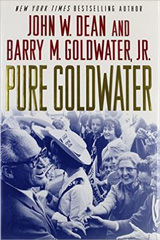
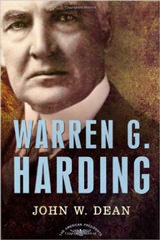
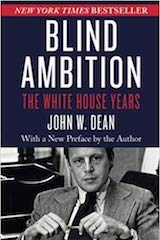
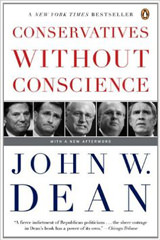
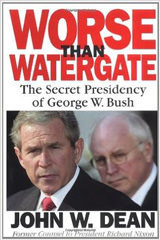
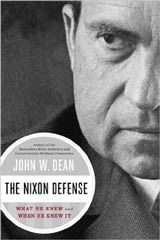
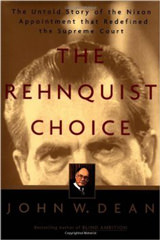

[…] is the second and final part of the series by Mr. Dean on the Penn State Child Abuse Scandal. The previous part appeared here on Justia’s Verdict on Friday July 27. […]